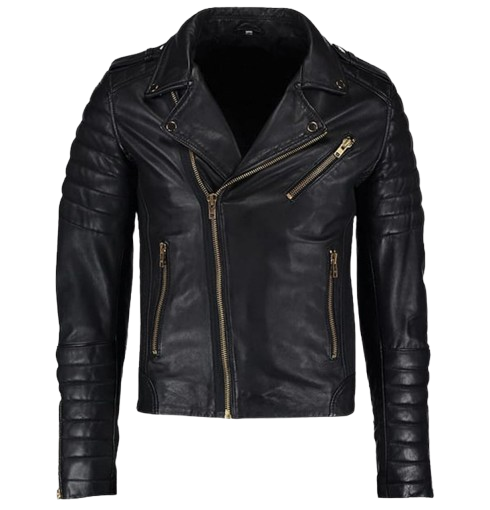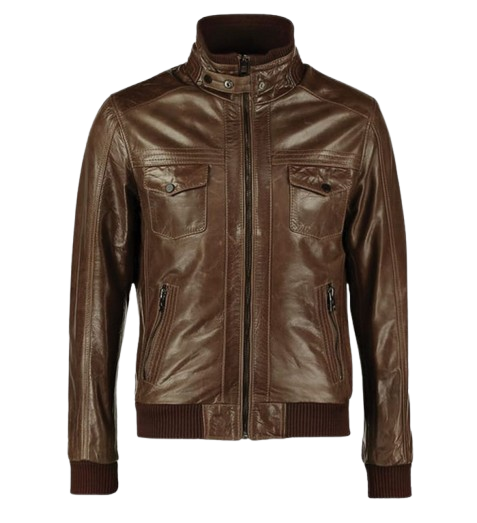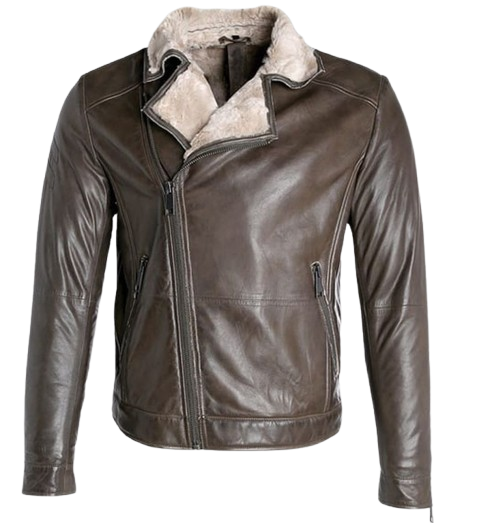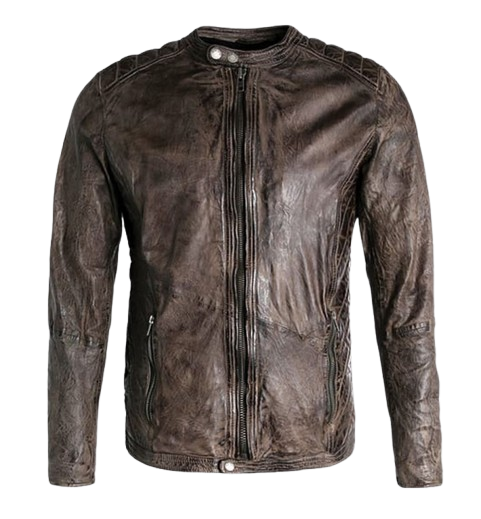A leather jacket is more than outerwear—it’s a long-term investment in style, durability, and attitude. Among the many types of leather, sheep leather (lambskin) and cow leather (cowhide) stand out for fashion enthusiasts. Each type brings unique qualities to the table, and choosing the right one depends on your lifestyle, personal style, and purpose.
Let’s dive deep into what you should consider before making that stylish purchase.
🧥 1. Leather Type: Sheep vs. Cow
Understanding the core material is key to knowing how your jacket will look, feel, and age over time.
🐑 Sheep Leather (Lambskin)
- Texture: Feather-soft, buttery smooth, and luxurious to the touch
- Weight: Lightweight, making it perfect for indoor wear and layering
- Flexibility: Highly flexible and molds easily to your body shape
- Fashion Use: Often used in designer or high-fashion leather jackets due to its refined appearance
- Drawback: Not suitable for heavy-duty use or extreme weather—it’s more delicate and prone to scratches
🐄 Cow Leather (Cowhide)
- Texture: Thick and coarse with a visible grain; feels more rugged
- Weight: Heavier, which gives a more structured silhouette
- Durability: Excellent for withstanding daily wear and tear; it can last decades with proper care
- Fashion Use: Common in moto jackets, bomber styles, and utility-inspired fashion
- Drawback: Requires a break-in period; might feel stiff at first
Summary: Choose sheep leather for style and comfort; cow leather for strength and longevity.

🧵 2. Stitching & Construction
Even the best leather can be ruined by poor craftsmanship. Inspect these signs of quality:
- Stitching: Should be even, tight, and consistent—loose threads are a red flag
- Reinforced Areas: Check the elbows, shoulders, cuffs, and zipper lines—these should have double or triple stitching to prevent tearing
- Lining: A high-quality jacket will have durable inner lining (e.g., satin or polyester) that doesn’t tear easily
- Zippers and Hardware: YKK or RiRi branded zippers are a good sign. All buttons and closures should be metal, not plastic
Tip: Pick jackets that are handcrafted or come from trusted brands/artisans who emphasize quality.
🎯 3. Fit and Cut
A leather jacket should feel like a second skin—structured yet comfortable.
- Sheep Leather Jackets:
- Naturally drapes better on the body
- Great for tailored, slim-fit, or cropped styles
- Moves well with your body—ideal for city wear or casual outings
- Cow Leather Jackets:
- More rigid, giving off a bolder and more masculine silhouette
- Best for boxy cuts, biker jackets, or oversized styles
- Ideal for layering in colder weather due to thicker insulation
Tip: Always try it on with the type of clothes you’ll typically wear underneath.

🎨 4. Color and Finish
Leather jackets come in a variety of colors and finishes, and different leathers respond to dyes and treatments in unique ways.
- Sheep Leather:
- Takes dye well—results in vibrant and uniform colors
- Often found in polished finishes like semi-gloss, satin, or matte
- Perfect for fashion-focused designs in black, navy, maroon, or even pastels
- Cow Leather:
- Often used for rugged, earthy tones—brown, tan, olive
- Common finishes include distressed, burnished, and oiled looks
- Develops a beautiful patina over time, especially with full-grain leather
Tip: Think about your wardrobe—choose a leather tone that complements your most-worn outfits.
🔧 5. Care and Maintenance
Both types of leather require proper care, but some key differences exist:
- Sheep Leather:
- Use mild leather conditioners specifically formulated for lambskin
- Store away from direct sunlight and heat to prevent drying or cracking
- Avoid heavy rain; it’s more absorbent and less water-resistant
- Cow Leather:
- Easier to clean and condition—use beeswax-based products or leather balms
- Withstands moisture better, but waterproof sprays can enhance resistance
- Can be re-dyed or refinished after years of use
Tip: Never fold your jacket—always hang it on a wide hanger to avoid shoulder creases.

💵 6. Price vs. Value
The price tag can vary greatly depending on the type of leather, craftsmanship, and brand.
- Sheep Leather:
- Typically more expensive due to its luxurious feel and rarity
- Considered a premium choice in the fashion world
- Best for those who value elegance, comfort, and style over rugged utility
- Cow Leather:
- Offers better durability for the price
- Great investment if you’re buying one leather jacket for long-term use
- Holds up better against rough environments or motorcycle riding
Tip: Don’t just compare prices—look at leather quality, inner lining, craftsmanship, and warranty.

🧠 Final Thoughts
Whether you’re stepping out in style or gearing up for a rugged ride, the right leather jacket makes all the difference.
- Choose sheep leather if you want something soft, luxurious, and modern
- Opt for cow leather if you prefer durability, structure, and a bold, timeless edge
A good leather jacket isn’t just a fashion piece—it’s a legacy. Take your time, do your research, and invest in something that fits your personality as much as your body.
Would you like this turned into a blog post format for your website with suggested images or call-to-action sections like “Shop Now” or “See Our Leather Guide”?
